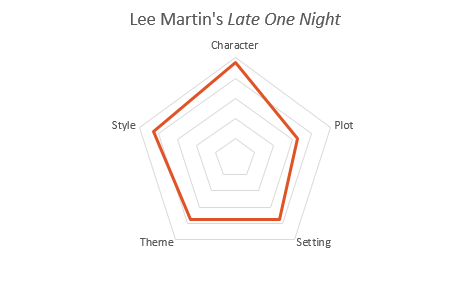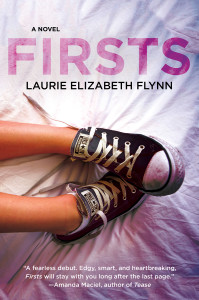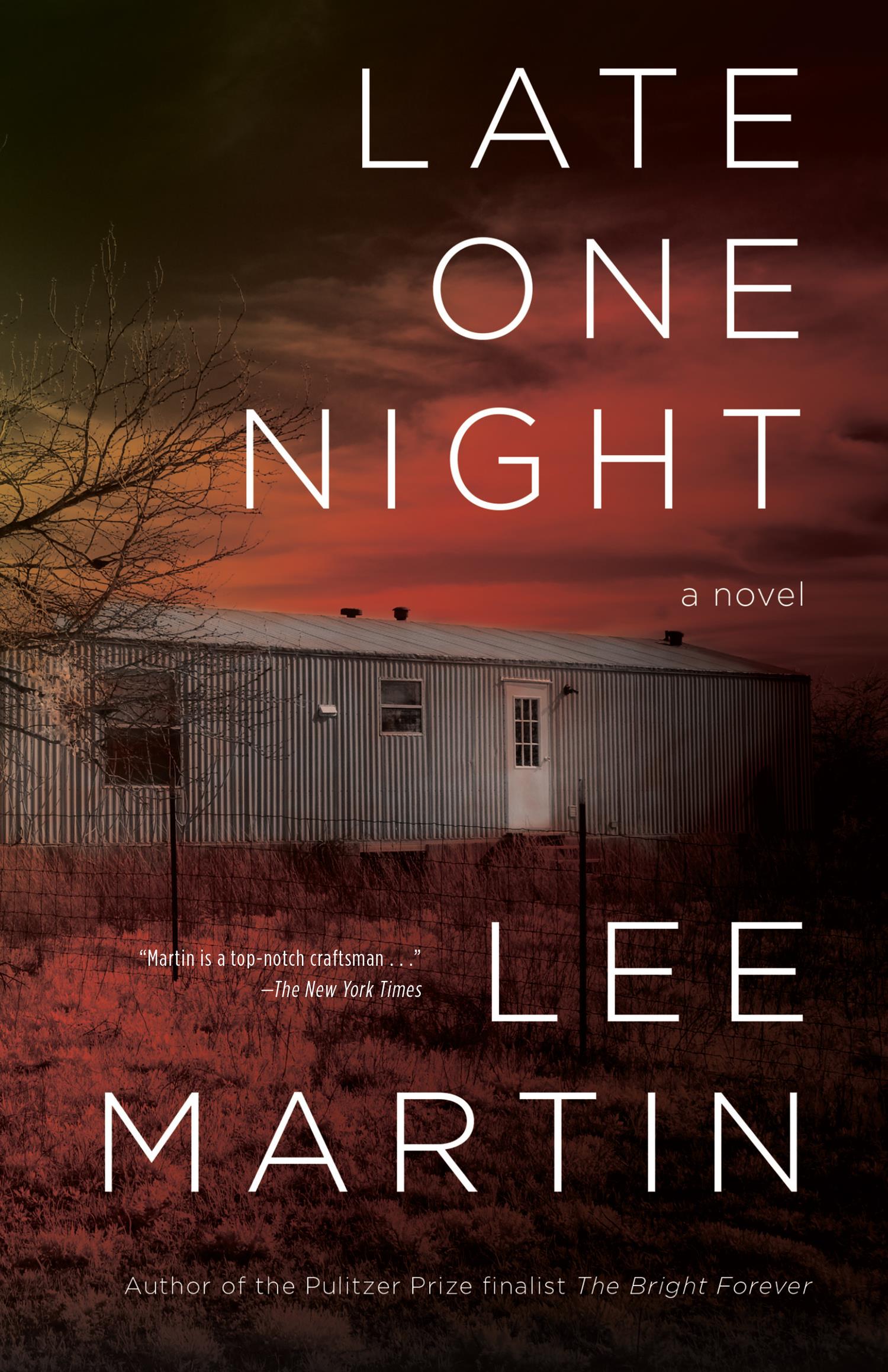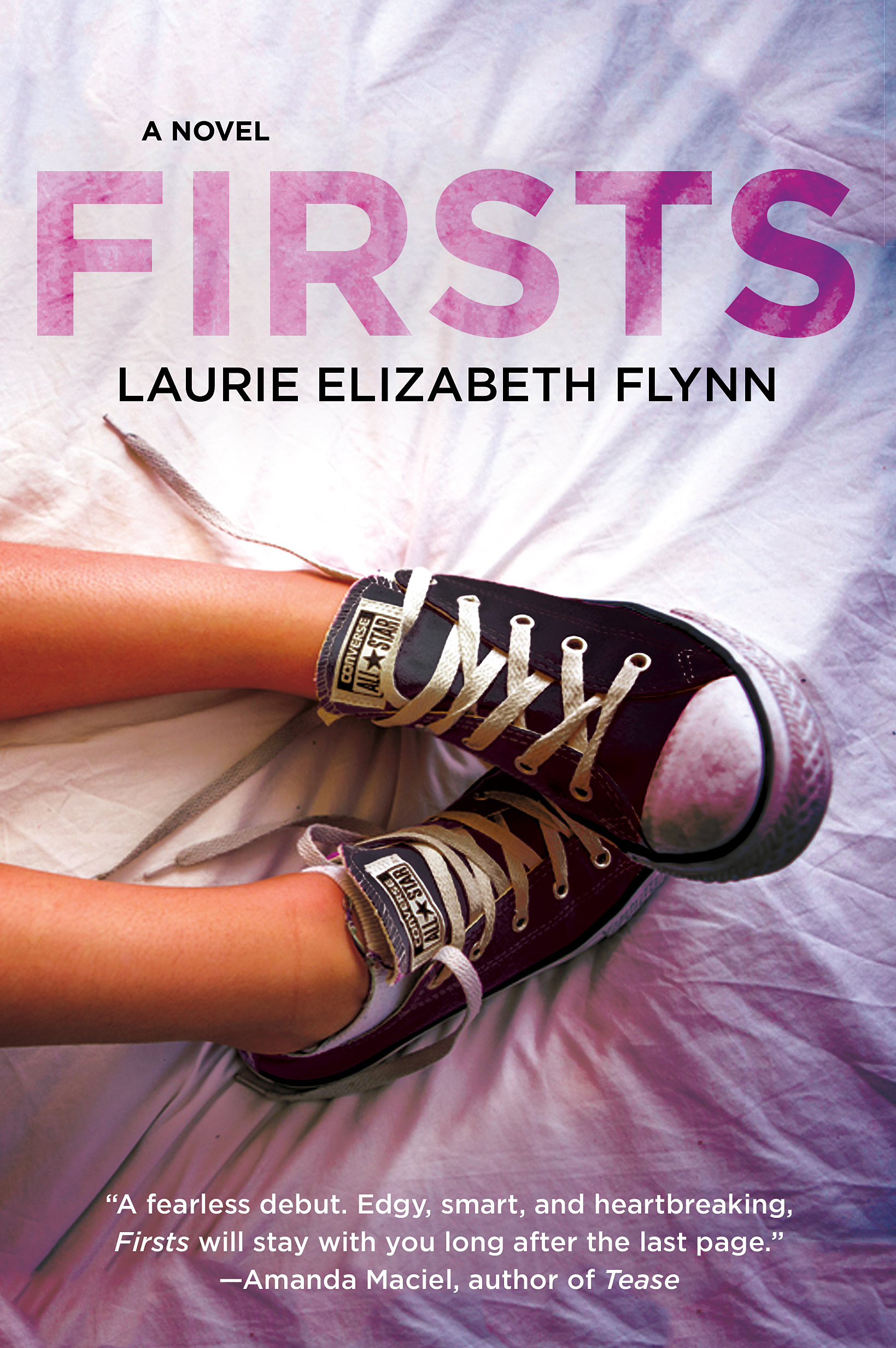There are couples like Ronnie and Della Black in every small town; this one happens to be Goldengate. A young man and young woman fall in love or something like it and create children who become a happy burden. Husband and wife do the best they know how, but they are increasingly alienated by time and worries about money and the increasing feeling that they determined the course of their lives too early. In Late One Night, Lee Martin turns his perceptive and empathetic eye on such a couple and the fire that ends and changes the lives of countless denizens of Goldengate.
Mr. Martin, whose excellent 2006 novel The Bright Forever earned him a Pulitzer Prize nomination, once again offers the reader a generous look into the hearts and minds of people who are often overlooked or whose perspectives are ignored outright. It’s not a spoiler to reveal that what happened late one night is a fatal fire that claimed the life of Della Black and three of the seven Black children. Wayne Best, Laverne Ott and the other townspeople were already dubious about Ronnie…did you hear? He left his wife and all those children to take up with young Brandi Tate, who’s already carrying his baby. Ronnie receives even less sympathy when it becomes clear that his car was seen was speeding away from the scene just as the fire started to burn.
Late One Night is not as much a procedural mystery about a possible arson as it is a deep exploration of the aftermath of a great and permanent sadness and the flawed person who may have been responsible. Like his other works, the book draws upon one of Mr. Martin’s strengths as a writer: the ability to humanize characters who may otherwise be granted little mercy.
We would all do well to take this lesson to heart. Whether you’re writing about a man who may have killed his wife and most of his children, or may have inappropriate feelings (as in The Bright Forever), or an old man who may be responsible for the death of his best friend fifty years ago (as in River of Heaven), stigmatized characters deserve to be humanized, not dehumanized. The general population is often reductive and simplistic with regard to society’s outliers, but writers do not have that right. Have we all committed the kind of sins that inspire Mr. Martin’s novels? Of course not. We are, however, not the same in the dark as we are in the light and we seek out people who are kind enough to see us for who we are on the whole.
How much should you tell the reader, and when should you tell them? It’s never easy to say, but Late One Night offers powerful lessons to help writers solve this dilemma. Mr. Martin begins this novel with a brief interrogation scene. In Chapter 1, Sheriff Ray Biggs asks Ronnie to unravel the mystery that has been on countless lips across Illinois since the news of the fire broke: “You better start talking…you better tell me something I’ll believe.” So we know that something truly awful has happened. In Chapter 2, Mr. Martin takes us back to the trailer fire. In Chapter 3, Mr. Martin goes back even further in time to introduce us to Della and the kids. The author continues this trend, filling his precious page space with the details of the life that Della and Ronnie shared. What do we know almost immediately? Della and at least a few of the kids are dead or at least very, very seriously injured. Do we need any more information at this point? No. Perhaps the biggest reason is that we don’t yet care about Della and the kids on anything more than a surface level. Mr. Martin tells us the story of the dissolution of the Black marriage so we will be emotionally invested in their fates and the way what happened Late One Night reverberates through Goldengate. Mr. Martin is telling us, in effect, that a character’s death is not as important as the life that he or she led.
Everyone who has ever lived has death in common. Someday, we will each breathe our last, speeding our reversion to dust. What is much more important? Much more interesting? What happened between birth and death, not the circumstances of either. Mr. Martin ensures that his focus is properly placed.
Speaking of focus, Late One Night is also contrived to play to another of the author’s strengths: character development. Now, the plot of the book chugs along at a pleasing pace and I was always curious what would happen next, but it seemed to me that the book’s plot was, in a way, released through character. Because Mr. Martin devotes so much time to immersing us alongside the people of Goldengate, the reader begins to wonder about characters in the same manner they usually do about plot. In this way, the inherent questions we have about the plot are placed alongside those we have about character. For example:
PLOT: How did the fire start? Was it an accident? The baby inside Brandi Tate is growing full speed ahead; how will the new child complicate matters?
CHARACTER: Will Captain and Shooter ever reach the kind of understanding about each other that fathers and sons deserve? Laverne Ott seems like such a decent person…how will she feel about what happens to the remaining Black children? Gosh, Ronnie and Della had such an unhealthy relationship and now the latter is gone; is Ronnie a terrible human being, or is he just a product of his circumstances? She may have been a teensy bit of a homewrecker, but is Brandi all that bad?
See how these separate and equal qualities of writing drive the reader forward? The overall point is that the writer has an obligation to give the reader reasons to continue. We can fulfill this obligation in a number of ways. If the setting of our story is not very compelling, then we must make the other elements of fiction more compelling. Here’s a wholly unscientific chart gauging how much Mr. Martin privileged each element of fiction:

Of course, I liked the plot very much and advise you to pick up the book, but Late One Night is not a whiz-bang action thriller like Transformers 11: Tin Man’s Revenge. That film, in turn, will have put very little emphasis on character, setting and theme…which makes sense; do you watch a Transformers film to see where Shia LaBeouf or Mark Wahlberg are on their life journeys? Nope. The writers and directors of those films pack the screen full of style and plot to maintain your attention in the same way a clicker attracts the attention of your puppy. Mr. Martin uses the right tools in the right stories to please his audience.
Having just finished my own far inferior novel, I’ve devoted a great deal of thought as to how I should begin each of the brief chapters that tell my character’s story. But gosh, isn’t it hard to begin and end each chapter with a powerful and true statement about human existence that also keeps your narrative humming? Let’s take a look at the opening sentences of the seven chapters of the book:
1: Ronnie swore it was talk and nothing more.
2: Della and the kids-the oldest fourteen, the youngest still a baby-lived in a trailer just south of the Bethlehem corner.
3: Earlier that evening she’d scooped the hot ashes from the Franklin stove into a cardboard box.
4: Della, nor anyone else for that matter, had any way of knowing that a few weeks before the fire, Shooter had forced himself to go through more of his wife’s things, a task he’d been doing a little at a time since she died back in the spring.
5: The trouble between Ronnie and Della came to a head one evening in early September when she showed up at a Kiwanis Club pancake supper with her long blond hair hacked off and ragged, tufts of it sticking out from her head and hanks hanging down along her slender neck.
6: In his heart Ronnie often felt all scraped out and empty over the way his life with Della was-too much want, too much lack, too much desire running up against the no-way-in-hell of it all.
7: By Thanksgiving, Della’s hair was growing back.
Will you excuse me if I pat my own back? Look how strong the focus on character is in each of these lines. It’s very clear that Mr. Martin wants us to get to know his subjects very well. Just as importantly, these first lines slam us into the “mystery” about the fire (1, 2, 3, 4) and inform us about the crucial relationship between Ronnie and Della (5, 6, 7) and immerse us in the Goldengate community (1, 2, 4, 5, 7). I think the important lesson here is that first lines should not be mere throat clearing that delays the narrative. Even if your creative work is bigger on setting than plot, you need to give the reader some reason to continue, something that Mr. Martin does with expertise.
If you haven’t yet read Late One Night, you have my assurance that I have not ruined any of the beauty or big surprises in the work. Mr. Martin’s restrained and gorgeous prose is a joy in itself. Like much of the author’s work, this book makes you think about the people around you in a different way. Instead of serving as mere extras in your own life, those people sharing the diner counter with you, walking beside you in the park…they are real human beings who invariably lead complicated lives and we do well to embrace the depth of the humanity found in others instead of making the easier choice to languish in a dark realm filled with shallow stereotypes.
Note: In addition to being a great writer, Lee Martin is also a very generous teacher. If you are also a wordsmith, please consider following his Facebook group. In addition to informing you about his own work, he links to his very useful blog posts. He also has the Twitter (@LeeMartinAuthor). Don’t we live in fascinating times?
Novel
Dzanc Books, Late One Night, Lee Martin, Ohio State
Friends, sometimes I have trouble refilling the metaphorical gas tank. I fall prey to so many of the wrong kinds of thoughts-I’ve been doing this for so long and everyone else is so much more successful than I am-Have I wasted all of these years and decades?-and some of what I read leaves me cold. I try to follow advice I learned from Threesome, a 1990s film trenchant to this discussion. To paraphrase: reading is like pizza. Even when it’s bad, it’s still pretty good. I guess. Thankfully, I stumbled upon something great. A book so beautiful and funny and sad and well-written that I wanted to reach through the pages and hug the narrator and to be the father she needed.
Laurie Elizabeth Flynn‘s Firsts called out to me atop the Young Adult shelf at the river’s end bookstore. The cover design (by Danielle Christopher and using a photograph taken by Samantha Scott) intrigued me instantly. See? Look:
 The shoes on the bed (facing up!)…the position of the feet…the way the purple/pink of the title spreads to the bottom of the jacket… The image tells a story of its own, as all great book jackets do.
The shoes on the bed (facing up!)…the position of the feet…the way the purple/pink of the title spreads to the bottom of the jacket… The image tells a story of its own, as all great book jackets do.
So I read the copy on the inside flap:
Seventeen-year-old Mercedes Ayres has an open-door policy when it comes to her bedroom, but only if the guy fulfills a specific criteria: he has to be a virgin. Mercedes lets the boys get their awkward fumbling first times over with, and all she asks in return is that they give their girlfriends the perfect first time-the kind Mercedes never had herself.
Keeping what goes on in her bedroom a secret has been easy - so far. Her mother isn’t home nearly enough to know about Mercedes’ extracurricular activities, and her uber-religious best friend, Angela, won’t even say the word “sex” until she gets married. But Mercedes doesn’t bank on Angela’s boyfriend finding out about her services and wanting a turn - or on Zach, who likes her for who she is instead of what she can do in bed.
When Mercedes’ perfect system falls apart, she has to find a way to salvage her own reputation -and figure out where her heart really belongs in the process. Funny, smart, and true-to-life, Laurie Elizabeth Flynn’s Firsts is a one-of-a-kind young adult novel about growing up.
Say what? Don’t you want to read more? I did. So I turned to the first page:
Tonight, I’m doing Evan Brown’s girlfriend a favor. An awkward, sweaty, fumbling favor. Melanie, or whatever her name is, owes me big time.
Except she’ll never know it.
“Wait there,” I tell Evan before slipping into my walk-in closet.
I sneak a glance back at him, at his crouched-over stance on the edge of my bed, his skinny shoulders hunched forward and his hands on his knees. He looks like he’s getting ready to play a video game. I stifle a laugh. This is one level he won’t beat on the first try.
Come on. Come on! Firsts represents a beautiful combination of cover image, jacket copy and first page that should be taught in marketing schools. How can you avoid buying the book from your local independent bookstore?
Since I’m working on my own young adult book, let’s take a look at what Ms. Flynn did to grab the attention of a reader as jaded as I am.
First, and most obviously, Ms. Flynn has a slam-bang conceit. Mercedes sleeps with virgin boyfriends so their virgin girlfriends will have a better first time than she did. This conceit is packed with so much dramatic possibility. As a grown-up (at least in age), I understood that Mercedes has some deep, dark and massive hurt in her heart that will likely figure into the book. Obviously. As a relative grown-up, I understand that girlfriends don’t want to hear their boyfriends had sex with “someone like Mercedes,” but Mercedes and these teenage guys aren’t thinking that far ahead. The situation will explode into drama. Obviously.
Look at the first two paragraphs again:
Tonight, I’m doing Evan Brown’s girlfriend a favor. An awkward, sweaty, fumbling favor. Melanie, or whatever her name is, owes me big time.
Except she’ll never know it.
Ms. Flynn starts in medias res and the jacket copy gives the reader the clues they need to know that there will be some very tastefully described sex going on. In the first chapter! We’re all adults here, right? We can keep it real. People enjoy stories that keep it real by addressing sex when appropriate. And the sex in Firsts is not titillating, at least to me. (Like I said, I’m just barely old enough to be Mercedes’s father.) I am going to guess that I would have different feelings if I were a young adult reader of this young adult book, but Ms. Flynn uses sex, a perfectly natural part of the adult human experience (or so I hear), in compelling ways. It’s a part of her conceit, but it’s also a mirror that allows us to understand Mercedes and the other characters, just like births, deaths, graduations, weddings and every other meaningful milestone in life. Uber-Christian friend Angela fears sex and desires it in equal measure. “Wednesday Friend” Zach likes it a great deal, but it’s not everything, or even the first thing, that he wants from Mercedes. The sex in the book is what I call a “shiny thing.” It gets a reader’s attention, but allows the skillful writer to build exposition, characterization and to squeeze in a lot of humor. Prepare yourself for one of my highest compliments: the sex scenes in the book reminded me of those in the Alexander Payne/Jim Taylor film Election, based on the book written by one of my favorite writers, Tom Perrotta:
Ms. Flynn’s book is fun! And funny! Look at the third and fourth paragraphs again:
“Wait there,” I tell Evan before slipping into my walk-in closet.
I sneak a glance back at him, at his crouched-over stance on the edge of my bed, his skinny shoulders hunched forward and his hands on his knees. He looks like he’s getting ready to play a video game. I stifle a laugh. This is one level he won’t beat on the first try.
This is a hilarious description. How can you resist not being drawn in? I have mentioned my occasional lack of enthusiasm for some of “literary” literature, and I think that happens to me because I don’t see a lot of “literary” literature trying to be fun and funny. Ms. Flynn delivers the “feels,” as the awesome young adult audience puts it, but she also delivers the knowing and the hilarious.
Examples:
Here’s how Mercedes describes her somewhat distant and overly “cool” mother:
Kim’s DUI last summer cost her a three-month license suspension and would have entailed a couple days in jail if not for her excellent lawyer. Kim would never admit it, but I know she’s secretly proud of her DUI. Now she shares an extracurricular activity with D-list celebrities everywhere.
See? This is humor that is funny at the same time it is sad. Great humor has an undercurrent of sadness or anger behind it.
A little later, Mercedes is about to have sex with Zach, her standing Wednesday appointment:
“Seriously. It could be our four-month anniversary. I’d treat you right.” He grabs my arm and twirls me around. “I think I’m in love with you.”
I zip up his fly and buckle his belt. Everything in reverse.
Can’t you see this happening in a film? Again, it’s funny (and visual), but more importantly, it is tied into the protagonist’s sadness. Mercedes is literally closing up shop at the mention of the “L” word. We want to know why. We feel bad for her.
I don’t want to ruin any of the rest of the book. Suffice to say that Firsts is an impressive debut novel of any genre and I regret that the book I’m currently working on will not be as good. (Though I’m grateful Ms. Flynn jumpstarted me a little.) Ms. Flynn’s instincts have guided her true and we do well to steal what makes Firsts so very compelling:
There is a hilarious and pathos-packed narrator.
There are big stakes, both for the narrator and those around her.
There is humor that enhances the drama and there are lots of “shiny things” to be found.
Novel
Laurie Elizabeth Flynn, Thomas Dunne Books, Young Adult
I’ve already told you some of the many things that we can learn from Sarah Dessen’s excellent YA novel The Moon and More. In case you are unfamiliar with the contemporary YA scene, you are missing out on some of the most engaging work that is currently being produced. You’re also missing out on the beautiful enthusiasm of so many readers.
Yes, yes. We “literary” folk have blogs and we share enthusiastic “THIS” posts on Facebook. That’s all great. But look at how YA fans can’t help but gush about a book they loved. These people are readers. They’re not picking up books because they are being forced to do so. They are reading because they crave well-told and exciting stories populated by interesting characters. They spend their valuable time proselytizing on behalf of authors they love. Perhaps best of all, these readers engage in some refreshingly story-focused literary analysis. Instead of mentioning that The Moon and More‘s Emaline is part of a blended family and then droning on for an hour about the representation of blended families in German expressionist poetry written in 1934 but published in 1936, these reviewers talk about the story and what it made them feel and why you should read the book.
I know…I know. We all write because we have a compulsion to do so deep in our hearts. You must admit, however, that you would enjoy seeing your work greeted with the same unbridled enthusiasm.
Novel
Sarah Dessen, Young Adult
I’m not the oldest writer around, but it’s been quite some time since my reading list was packed exclusively with books intended for children or young adults. My relationship with children’s literature was complicated by the fact that I don’t recall reading a single picturebook, but I do recall successfully talking the school librarians into letting me borrow books that had more space for words than images. It wasn’t long after that that I was dipping into my father’s Stephen King collection and I was much more interested in Forever than Blubber when I wanted to read some Judy Blume.
Then one day about a decade ago, I was on the subway heading back to Flushing, the town so nice that they named it for what a toilet does. I was reading an advanced reading copy that I had bought from The Strand. Scott Westerfeld’s So Yesterday was so much fun! And the characters were so engaging! And stuff was happening! I was halfway through the book and halfway home when I realized that the book was a Young Adult book. Written primarily with a teenage audience in mind.
In the aftermath of that experience, I picked up YA books from time to time, but I really ramped up my consumption of those works when I had the idea for my own YA book. YA is a fun and vibrant genre that has a lot to teach us stuffy MFA-type literary writers; if we want to create new readers, we should borrow liberally from what YA writers are doing.
One of the books I read recently was Sarah Dessen‘s The Moon & More. Ms. Dessen is the fantastically successful author of about a zillion YA novels; this one is about a young woman named Emaline, whose family owns a beach resort in North Carolina. Ms. Dessen introduces everyone in a graceful first chapter that sends Emaline around the resort, establishing the setting and characters of the book. Emaline has a long-term boyfriend named Luke who looks good without a shirt on. Emaline is in an interesting and common family situation; she lives with her mother and stepfather, a man she calls her “Dad.” Twenty-three of Emaline’s chromosomes came from the son of a rich family who only contributed money to his daughter’s life. While that’s better than nothing, her “father” (her title for him) has only been a tangential part of Emaline’s life. In the years you would expect a teen to do so, she pestered her mother to help her make a connection. Since then, her father has seen her on occasion and discussed novels with her. This is the status quo in Colby, North Carolina as the novel begins.
Here’s the book trailer:
Ms. Dessen shrewdly employs many of the powerful techniques common to some of my favorite YA novels. (Techniques that should be more common in traditional literary work…) First of all…the book is fun. Ms. Dessen’s writing is funny. The books is not a self-conscious slog through a character’s psychology. Emaline is a deep and funny character in a story populated with many of the same. There isn’t enough humor in contemporary literary literature; everything must be so important and meaningful in a self-conscious manner. The Moon & More certainly has a message, but here’s the crucial point: Ms. Dessen puts storytelling ahead of message. Emeline’s story deals with the powerful themes of late-adolescent love, the pain of parental neglect (a personal favorite theme of mine), class struggles between those who live in resort towns year-round and those who skip in when the weather is nice and more. But the book is primarily an exercise in Ms. Dessen enticing me to read on. How does she do this?
The narrative questions in Ms. Dessen’s book (and in most entertaining books) deal with the What Happens Next? instead of the Why Did That Happen? Ms. Dessen asks questions that propel the reader…in my case, they make me read on instead of trying to work on my own stuff.
- What is going to happen between Emeline and Luke?
- What is going to happen when Emeline’s father shows up?
- What is going to happen with the documentary about the artist?
- What is going to happen between Morris and Daisy?
These are the kinds of questions that get the most people interested in reading. Think of it in terms of Law & Order. What keeps people tuning in? Would you throw away a lazy Saturday on a Law & Order marathon if the writers were interested in answering questions like these?:
- Why did Olivia wear those shoes this morning?
- What was Fin thinking as he drank his morning coffee? (And your answer must be at least four pages long.)
Of course not. You would turn the channel because the author is not singing for his or her supper. Ms. Dessen’s work bears the mark of excellent craft, to be sure. More importantly, she is a skilled storyteller who offers you a peek into an exciting and emotional time in a complicated character’s life. Isn’t this what writing is all about?
Novel
Sarah Dessen, Young Adult





